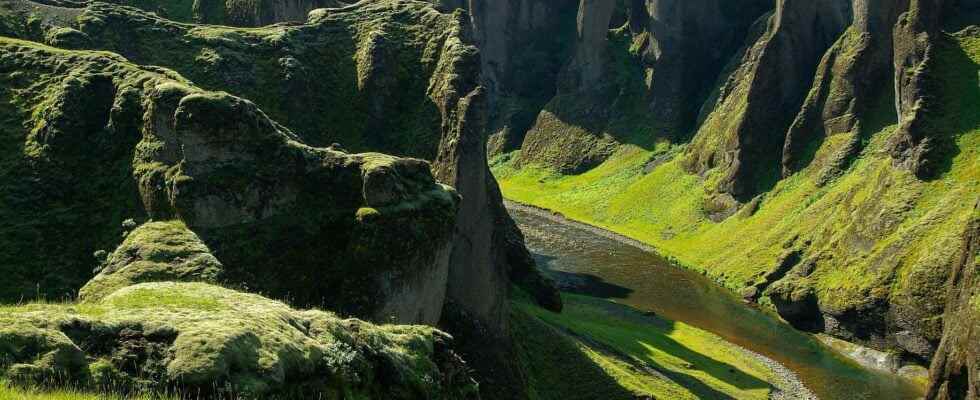Continental breakup is one of the fundamental processes of plate tectonics. While some continents seem to accept divorce quite easily, breaking up is much more difficult for others.
You will also be interested
[EN VIDÉO] A billion years summarized in 40 seconds: plate tectonics Researchers have modeled the movements of tectonic plates over the past billion years.
Grouping cycles and fragmentation of supercontinents are part of the fundamental tectonic processes that affect the surface of our planet. Their impact on life on earth is undeniable. The Wilson cycles indeed control the ocean circulation, the distribution of land emerged, the atmospheric composition and many other factors.
The signature of these different cycles experienced by the Earth is engraved in the geological landscape that we observe. However, we are still far from understanding all the aspects of these movements tectonics. The continental break-up, in particular, appears to be a relatively complex process because, despite the power of the tectonic plates, break a crust particularly resistant over 30 km thick is no small feat. Many parameters come into play: presence of flaws, areas of weakness inherited from an old tectonic cycle, a anomaly thermal in the coat… The factors influencing where and how the rupture will occur are numerous, as are the interactions between these different processes.
Magma? Or not…
The role of magmatism has often been invoked to explain the continental break-up and the separation of two new continents. By heating the rocks, magmatic activity leads to a significant weakening of the crust, a process that can explain the architecture of many continental margins, such as the Uruguayan margin for example. In this case, we speak of passive margins rich in magma. However, many margins have a very different architecture, where magmatic signs are sorely absent. While continental ruptures carried out under the action of significant magmatism are generally rapid, leading to the formation of short margins, with a very narrow transition between the continental crust and the news oceanic crust, some ruptures occur very slowly, without calling on the magmatic process, at least not so clearly.
These margins, which are said to be poor in magma, have very complex architectures. The transition zone between the continental crust and the oceanic crust is very long and is characterized by the presence of a broadband of hyper-thinned continental crust, less than 10 km thick. This hyper-thinned domain is composed of numerous blocks of intensely faulted continental crust, as if the crust had been stretched to its maximum, refusing to rupture. This architecture is characteristic of the formerly coupled margins of Iberia-Newfoundland and Australia-Antarctica, for example, but it is found in many other places on the globe.
The bare coat
Even more surprising when, finally, the continental crust ends up being interrupted, the basement that follows is not oceanic crust, at least not in the classic sense of the term. We then find a domain (which can be several hundred kilometers long), composed of mantle rocks. But finding such rocks on the Earth’s surface, directly at the bottom of the ocean, was totally counter-intuitive a few decades ago.
Normally, when they rise, for example at the level of a ridge, the rocks of the mantle melt under the effect of rapid decompression. This partial fusion will give birth to igneous rocks (basalts, gabbros…) that we know well. However, the areas of exhumed mantle observed on the ocean floor at the low magmatic margins show no trace of melting. It has long been complicated to explain this observation. It indeed requires a very slow ascent allowing the progressive cooling of the rocks of the mantle. Exit therefore a magmatic process. Only a purely tectonic process could explain such a rise. The scientists thus discovered that these areas of exhumed mantle were linked to the play of large tectonic faults, plunging into the mantle.
A process of rupture that can last a very long time
It’s a bit as if the continents refused at all costs to separate. The continental crust is stretched to its maximum. When it finally breaks, it is not a ridge that is put in place, but a fault that will continue to stretch the lithosphere remaining continental for several million years, via a slow and amagmatic exhumation of the upper mantle.
Imagine a chocolate bar containing a soft caramel core and pull gently on each side. The chocolate (the continental crust) will crack (the faults), then this envelope will end up breaking, but the heart of caramel (the upper mantle of continental origin) will continue to stretch, sometimes for a very long time, until until, in the end, it is too thin and also ends up breaking. This last stage represents the break lithospheric. This is an excellent image of what happens when two continents separate amagmatically. Beyond the last stage, the asthenospheric rise is high enough to generate the birth of a ridge and the creation of a magmatic oceanic crust.
Unlike magma-rich margins, where rupture occurs through magmatic forcing linked to the active rise ofasthenosphere, the extension on the low magmatic margins will lead to a series of tectonic processes and a passive asthenospheric mantle uplift. Several factors can explain this difference: an abnormally cold coat due to an inheritance (presence of a deep subduction slab), a speed of very slow extension, or an excessively thick continental lithosphere (case of the cratons for example).
Between the two extremes represented by the very magmatic margins and the completely amagmatic margins, there is however a whole range of possible variations and research continues to refine our understanding of the processes involved.
Interested in what you just read?
